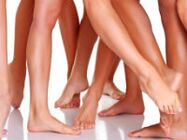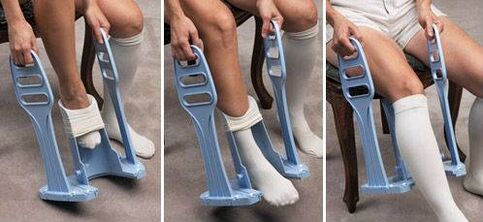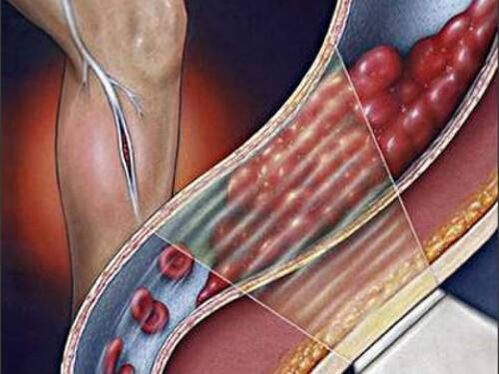
Varicose veins are a common disease characterized by an increase in the lumen of blood vessels, disruption of the valve apparatus and the appearance of reverse blood flow.The pathological process can be localized in different places, therefore there are different types of the disease:
- expansion of the esophageal veins;
- rectal veins (hemorrhoids);
- pelvic veins;
- veins of the spermatic cord (varicocele);
- Veins of the lower extremities.
Varicose veins are most common on the legs.It is estimated to affect more than 30% of the population, with the majority being women.Varicose veins on the legs are not only unsightly protruding veins, but are also associated with many unpleasant sensations and inconveniences.The pathological process is accompanied by heaviness, pain and swelling and often leads to dangerous complications: thrombophlebitis, thrombosis, trophic ulcers.Many want to know how to get rid of varicose veins forever, as they significantly affect the quality of life.Unfortunately, this phenomenon is irreversible and the only thing that can be achieved is to stop or slow down the development of the disease.
Reasons
The causes of varicose veins are not yet exactly clear.It is clear that the disease is accompanied by thinning, weakness and loss of elasticity of the vascular wall, as well as valve insufficiency.This causes the veins to become unevenly dilated, stretched, long, tortuous and knotty.There is an opinion that a genetic predisposition, i.e. weak blood vessels and defective valves from birth, play a decisive role in the development of the disease.
There are a number of factors that contribute to the development of varicose veins, although they are not the cause:
- Heredity (according to experts, the risk of developing the disease in people whose parents suffer from it is up to 70%).
- Belonging to the female gender.The reason for this is hormonal changes during puberty, pregnancy and menopause as well as taking hormonal contraceptives and wearing high-heeled shoes.
- Work activities that involve standing or sitting for long periods of time (hairdressers, salespeople, surgeons, waiters, drivers, accountants, programmers and others).
- Age at which weakening of blood vessel walls and wear of the valve apparatus is a natural phenomenon.
- Surgical procedures.
- Sedentary lifestyle.
- Increased intra-abdominal pressure due to obesity, pregnancy, heavy lifting (loads, weightlifters), frequent straining with chronic constipation and cough.
Treatment methods
Varicose veins are a chronic process that begins gradually and only progresses over time.Today it is impossible to completely defeat the disease, but it is possible to slow down its development and relieve symptoms if you use complex treatment, which includes:
- lifestyle changes;
- Diet;
- physiotherapy;
- compression therapy;
- medications (for internal and local use);
- surgical intervention;
- thermal processes;
- traditional methods.
You will have to fight varicose veins your whole life.You shouldn't self-medicate.They must be examined by a phlebologist or vascular surgeon who will make a diagnosis, determine the stage of the disease and the severity of the lesion, and prescribe appropriate treatment.The main task is to eliminate or reduce clinical manifestations, stop progression, prevent relapses and the development of complications.
The effectiveness of treatment depends on whether the patient follows all the doctor's recommendations.It is important to seek help early if there is no pain yet, but swelling, a feeling of heaviness and fatigue in the legs and small spider veins on the skin appear in the evening.
Correction of lifestyle
Effective control of varicose veins is not possible without lifestyle changes.The rules that must be followed are absolutely banal and ignoring them is usually associated with a lack of willpower or an irresponsible approach to health.
- Maintaining normal body weight.
- Farewell to bad habits: alcohol and smoking.
- Refusal to sunbathe, visit steam rooms and saunas, take hot baths (including foot baths).
- Rejection of high heels (no higher than 4-5 cm).
- Wearing special elastic knitwear.
- Providing physical activity.This could be walking, swimming, physical therapy, or another sport.The main thing is to exclude squats, weight lifting, long-distance running, jumping and martial arts.
- Proper nutrition.The diet should include more fresh vegetables, fruits, herbs, whole grains and seafood.It is recommended to reduce the amount of meat.You need to avoid smoked, fried, salty and fatty foods.As for drinks, give preference to green tea, clean water, fruit drinks, natural fresh juices and limit yourself to coffee.
- During the day, take every opportunity to raise your legs to an angle of about 20 degrees.
- Buy a special pillow for your feet so that they are above the level of your heart when you sleep.
- Try rinsing your feet with cold water as often as possible.
Compression therapy
Special elastic knitwear is available in a wide range today.These are knee-highs, stockings, tights of different colors and density, which practically do not differ from ordinary ones.They have developed into a good alternative to elastic bandages that are difficult to handle and visually unaesthetic.
Special knitwear cannot treat varicose veins, but they improve microcirculation, reduce the load on the veins, prevents blood stagnation, reduces the diameter of blood vessels and increases the outflow of venous blood and lymph.You feel lighter in your legs, you are less tired in the evening and there is no swelling.
prevents blood stagnation, reduces the diameter of blood vessels and increases the outflow of venous blood and lymph.You feel lighter in your legs, you are less tired in the evening and there is no swelling.
Without the habit of putting on compression socks by hand, it will be difficult at first.To make your work easier, you can purchase a special device.
There are four classes of therapeutic knitwear depending on the pressure applied.You can only wear compression class 1 products, which are considered preventative and are intended for healthy people.The rest should be prescribed by the doctor depending on the diagnosis and severity of the varicose veins.You should be aware that compression products may be contraindicated in some medical conditions.The doctor selects tights or stockings strictly based on size, otherwise the desired effect will not be achieved.
Drug treatment
To treat varicose veins, tablets and external agents in the form of gels, creams and ointments with different spectrums of action are used.They increase vascular tone, improve microcirculation, promote blood drainage and prevent skin changes.Medications are designed to eliminate fatigue, heaviness, malaise, swelling, itching, cramps and pain in the legs.Their appointment is strictly individual.

The main means of treating varicose veins are venotonics.They are made from horse chestnut, rutin and grape leaves and are almost always well tolerated by patients.Available in the form of tablets, capsules, gels.
To reduce blood viscosity and reduce the likelihood of thrombophlebitis, anticoagulants are used.These are ointments with cooling additives in the form of menthol, camphor and eucalyptus.They not only thin the blood, but also prevent the development of thrombophlebitis.
Antihistamines may be prescribed for skin lesions that cause itching.In case of inflammation, non-steroidal anti-inflammatory tablets are prescribed.
Surgical intervention
To eliminate varicose veins, operations are performed in which the affected part of the vessel is removed to stop the outflow of blood from the superficial vein into the deep vein.The operation is called a phlebectomy.In its classic form, it is used less and less these days as new, less traumatic methods of combating varicose veins appear.Such treatment is usually indicated for large vein diameters and advanced cases of the disease.
A gentler method is microphlebectomy, in which a section of vein is removed in parts and not through an incision, but through a puncture.
Thermal methods

Radiofrequency ablation is considered the safest and least traumatic method for treating varicose veins, although it has some contraindications.The method uses the thermal effect of microwaves, which closes the vein lumen.Main advantages:
- outpatient treatment;
- no anesthesia or incision required;
- Recovery doesn't take long;
- the procedure is easily tolerated;
- can be done in summer;
- After the treatment there are no bruises, swelling and pain are minimal.
Another method for treating varicose veins is laser coagulation.During the procedure, a laser is applied to the vessel wall.The irradiation causes the vein walls to stick together and the lumen to be completely closed.It is performed on an outpatient basis under local anesthesia without incisions.A catheter is inserted into the lumen of the vein, through which an LED is inserted and radiation is applied.The procedure is minimally traumatic and complications are very rare.
Sclerotherapy

This non-surgical method is one of the most common.It is used for small veins and as part of complex treatments together with surgical procedures.In effect, a special drug with a sclerosing effect is injected into a vein using a thin needle.This causes the vessel walls to stick together, close and interrupt blood flow.The affected vein turns into a strand of fibers.The main advantages of the method:
- outpatient treatment;
- low morbidity;
- ease of execution;
- The duration of the procedure is approximately 20 minutes;
- good cosmetic effect.
Traditional methods
Walnut tincture
Place chopped unripe walnuts in a glass bowl and add olive oil.Place in the sun for 40 days.Apply if necessary and lubricate the affected areas.Treatment should continue for approximately four months.
Cabbage leaf
Cut a cabbage leaf, apply a layer of olive oil on one side, apply that side to the affected area, bandage it and leave it for a day.Continue treatment for one month.

buckeye
This is one of the most effective folk remedies.To treat varicose veins, prepare a tincture from the fruits of the plant, which must be crushed, poured half into a glass container (three liters) and filled with vodka.Place in a dark place for a month, stirring occasionally.When you're done, rub the sore spots overnight.Alcohol tincture of chestnut for external and internal use for varicose veins can be purchased at the pharmacy.
Exercises
When varicose veins occur, the question may arise as to whether exercise and exercise are possible and which exercises are useful.Most doctors agree that physical activity is very important in this disease, since dynamism benefits the veins and static is harmful.But it is just as important to consult a doctor about which sports you can do and what levels of stress are optimal.In addition, the patient can be shown special therapeutic exercises that are carried out directly in a medical facility.At home, you can also do simple but effective exercises that, with regular exercise, will help relieve the symptoms of varicose veins.
- Lie on your back and place pillows under your feet so that they rise at a 20 degree angle.Close your eyes, relax completely and breathe deeply.
- While lying on your back, raise your legs vertically and rotate your feet alternately inwards and outwards.
- Lie on your back and move your legs like you would when riding a bike.
- Lie on your back, lift your legs and cross them (scissors).
- Stand tall, arms down, feet together.Slowly rise onto your toes and then lower them just as slowly.
- Walk in place and leave your socks on the floor.
- Sit in a chair, bend your legs towards yourself and away from you at the ankles, and then bend your fingers in the same way.
- Douse your feet with an elastic stream of water (alternating cool and warm).
Conclusion
Varicose veins are an irreversible process that must, however, be treated, especially since there are a number of modern methods that must be used in combination.Without treatment, there is a high risk of complications such as chronic venous insufficiency, phlebitis, thrombophlebitis, thrombosis, trophic ulcers and even such a dangerous condition that can lead to death as pulmonary embolism.




















